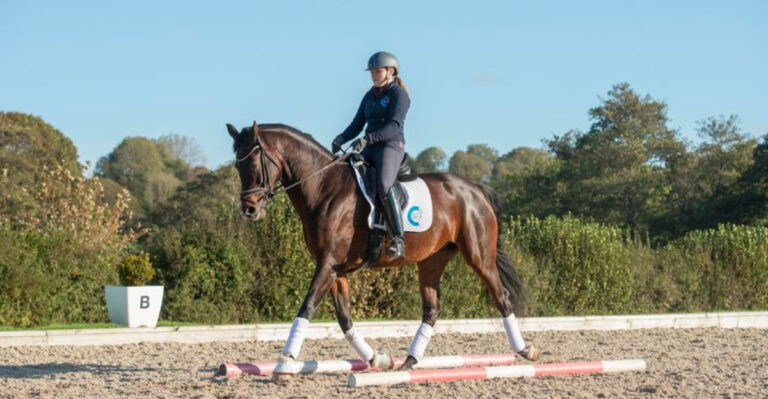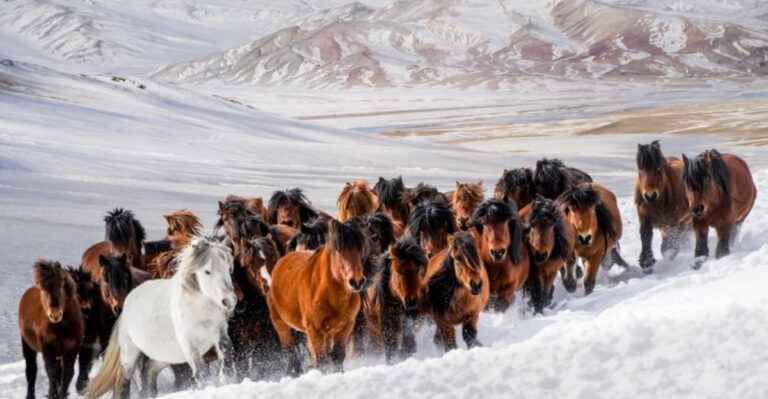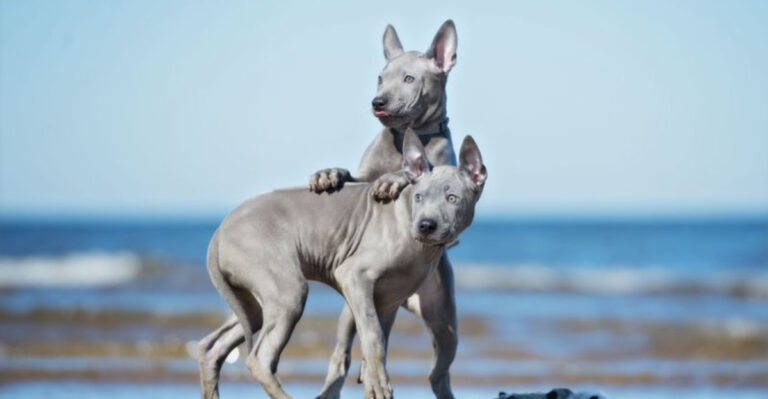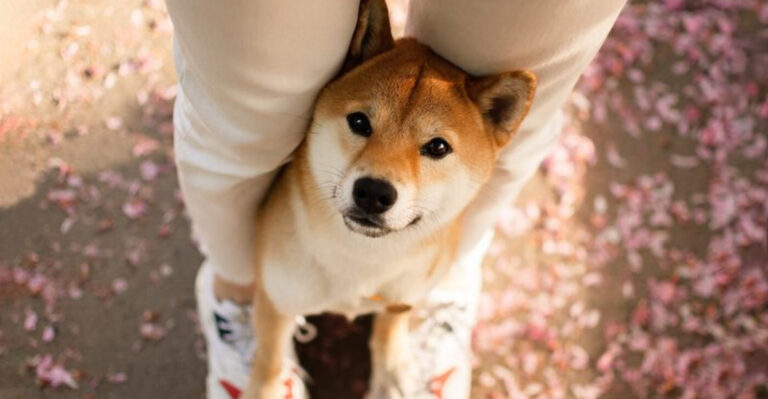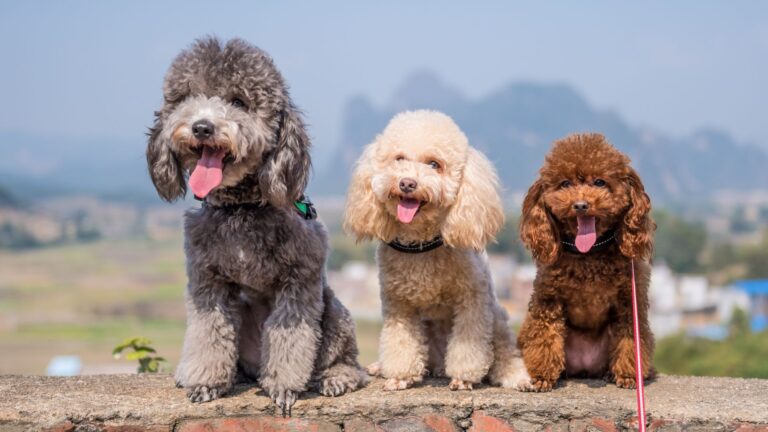12 Popular Gait Patterns In Horses And What They Reveal About Their Movement

Horses communicate volumes through the way they move. Each gait pattern tells a story about their health, temperament, and training level.
Understanding these movements helps riders and trainers work better with their equine partners, while veterinarians use gait analysis to spot potential health issues before they become serious problems.
1. Walk
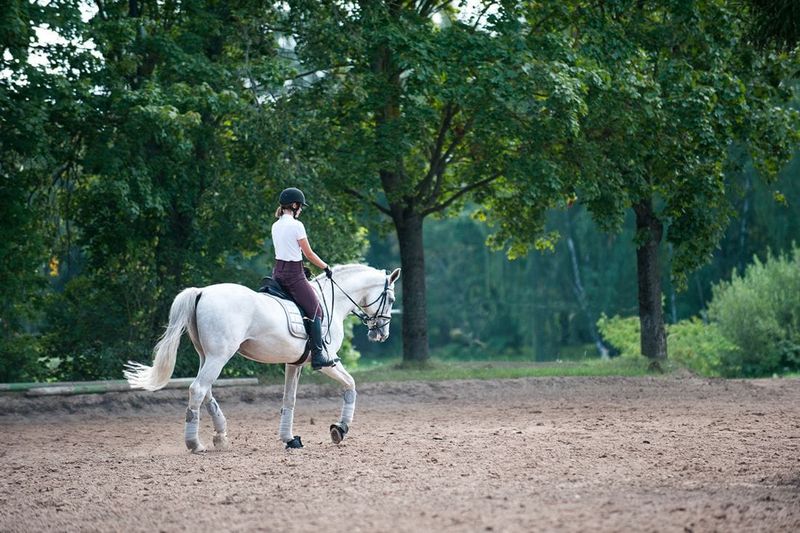
The four-beat walk is like a horse’s signature—no two are exactly alike. During this relaxed gait, each hoof touches the ground separately in a consistent rhythm.
A steady, even walk often indicates a level-headed horse with good balance. Irregularities might signal discomfort or tension, making the walk an excellent window into a horse’s physical and mental state.
2. Trot
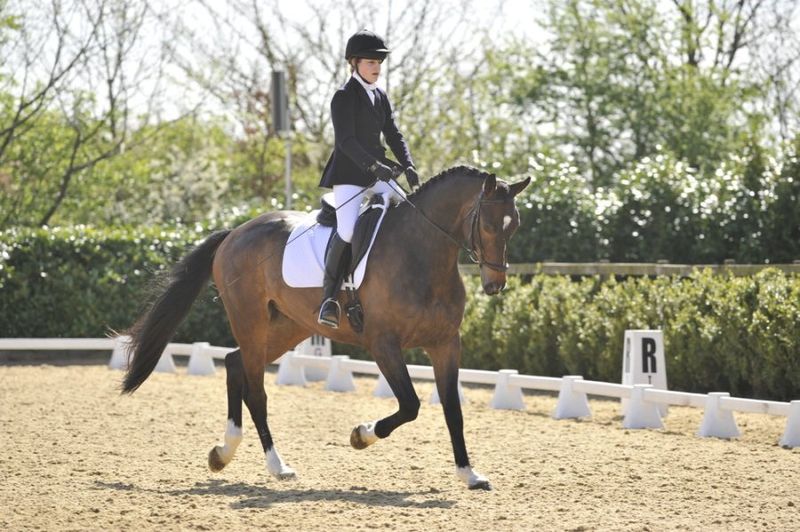
Bouncy and energetic, the trot showcases diagonal leg pairs moving in unison. This two-beat gait reveals much about a horse’s natural balance and coordination.
Smooth, consistent trotting often indicates good health and proper muscular development. Watch for head bobbing or uneven steps—these could signal lameness issues that need attention. Many trainers consider the trot a horse’s most honest gait.
3. Canter

The canter’s rolling, three-beat rhythm creates that magical rocking-chair feeling riders love. One hind leg strikes first, followed by the diagonal pair, then the remaining front leg.
A smooth, balanced canter shows athletic ability and good collection. Some horses naturally canter with more grace than others, but all can improve with proper training and strengthening of the hindquarters.
4. Gallop
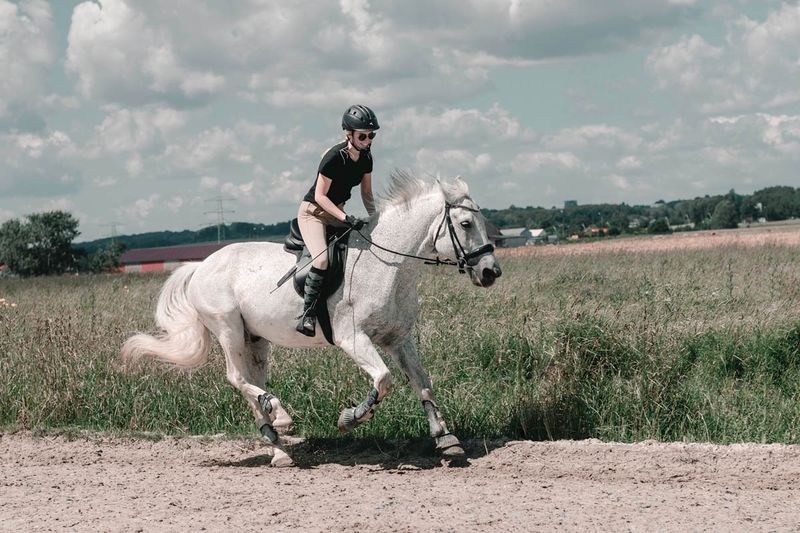
The thundering four-beat gallop represents pure equine power unleashed. Unlike the canter, all four feet leave the ground during the suspension phase.
A horse’s gallop reveals its cardiovascular fitness and explosive strength. Thoroughbreds can reach speeds over 40 mph, while draft breeds gallop more deliberately. The quality of this gait varies widely based on breed and individual conformation.
5. Pace
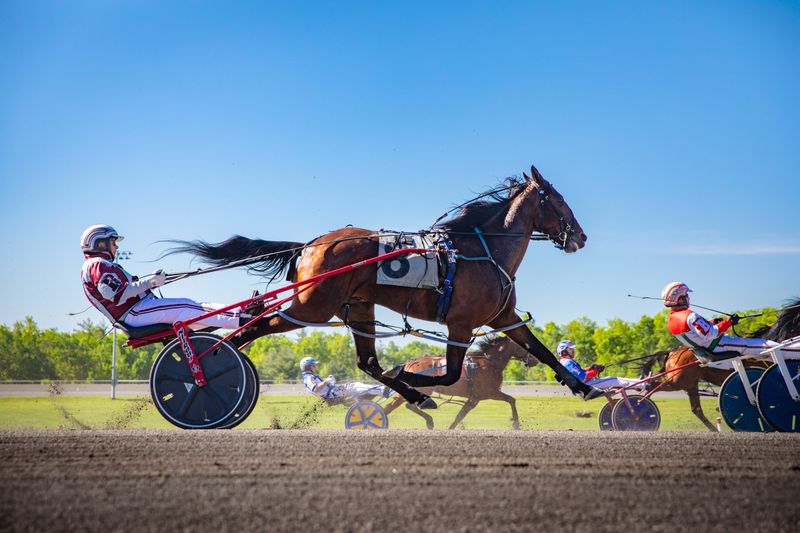
Lateral legs moving together create the distinctive pace—left legs then right legs in a two-beat rhythm. This natural gait appears primarily in Standardbreds and some gaited breeds.
Pacing horses excel at harness racing since this gait allows for sustained speed with less energy expenditure. While considered uncomfortable for riding, the smooth pace reveals specialized muscle development and genetic predisposition in certain bloodlines.
6. Rack
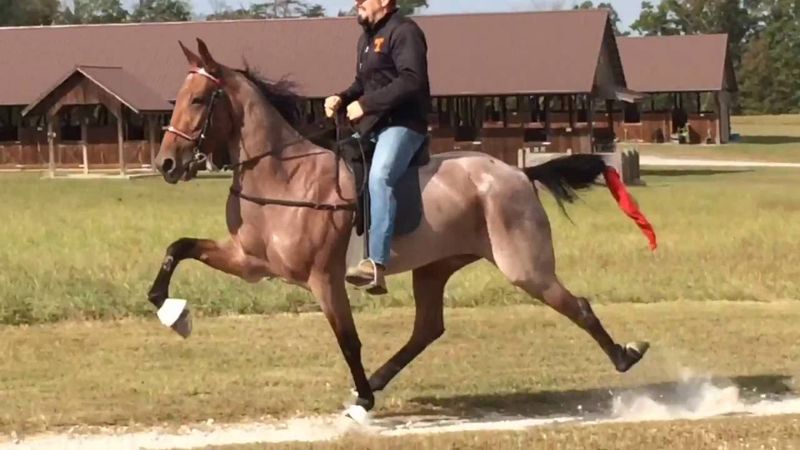
The rack delivers an incredibly smooth ride with its rapid four-beat gait. Each foot strikes the ground independently, but so quickly that the horse appears to glide.
American Saddlebreds and Racking Horses showcase this specialized movement. A clean rack demonstrates exceptional coordination and often specialized training. The absence of bounce makes this gait prized for riders with back problems.
7. Amble
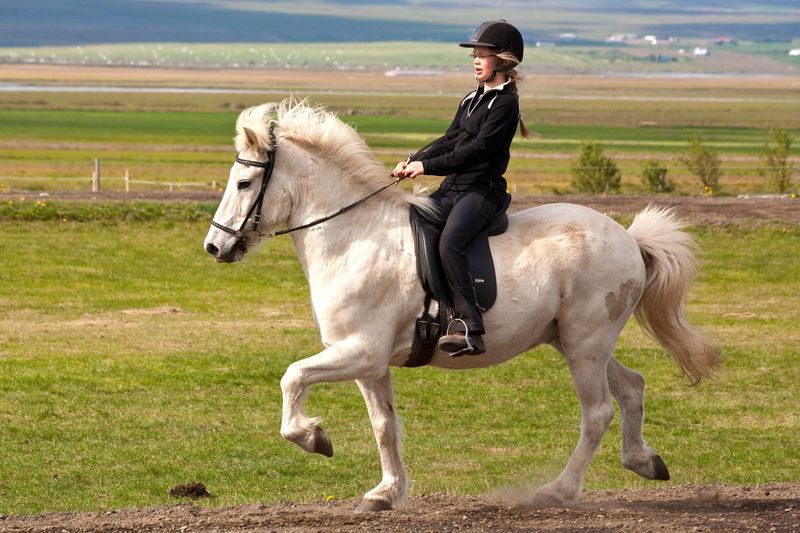
Casual and comfortable describes the amble perfectly. This relaxed, broken pace falls between a walk and faster lateral gaits.
Horses that naturally amble tend to be smooth rides for beginners and trail enthusiasts. The easy-going nature of this gait often reflects a horse with a mellow temperament. Many gaited breeds naturally fall into this pattern when asked to move out from a walk.
8. Flying Lead Change
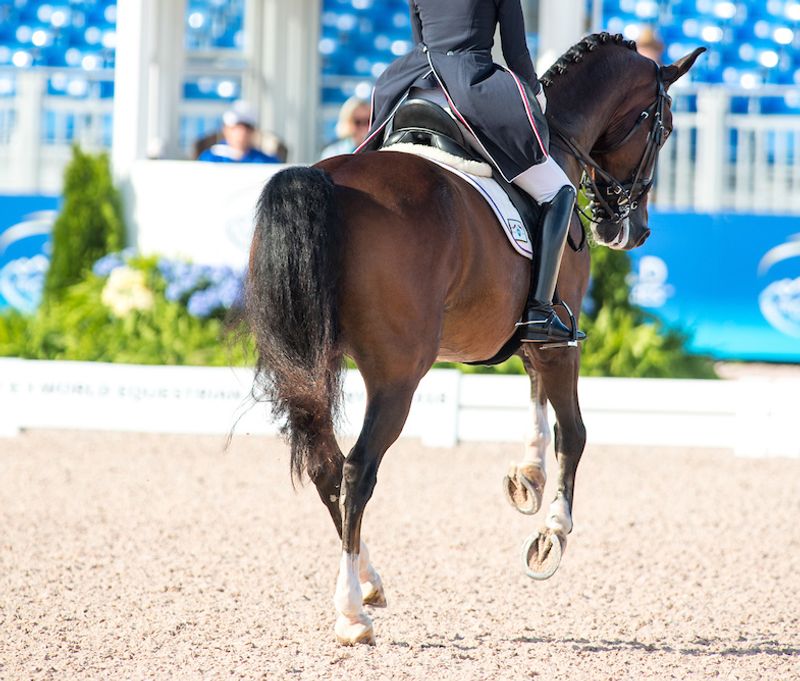
Magic happens when a cantering horse switches leading legs mid-stride without breaking rhythm. This athletic feat requires precise timing and body control.
Advanced dressage horses and working cow horses master this movement through extensive training. A clean flying change reveals exceptional balance, coordination, and responsiveness to rider cues. The smoothness of execution demonstrates the partnership between horse and rider.
9. Two-Point Gait
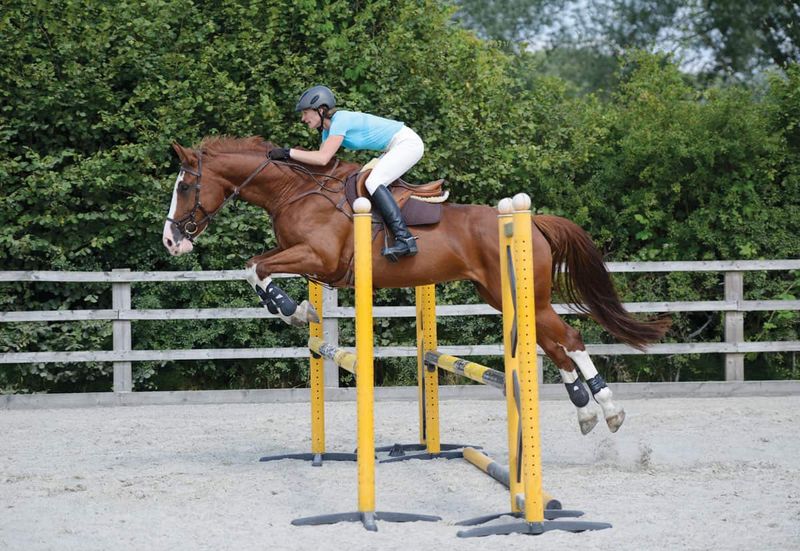
Riders create the two-point position by rising slightly out of the saddle while maintaining contact through their lower legs. This technique allows horses to move more freely beneath them.
Commonly used in jumping and cross-country riding, two-point reduces impact on a horse’s back. Horses often respond by lengthening their stride and increasing speed. The resulting movement reveals how well a horse balances itself without rider weight in the saddle.
10. Lateral Gait
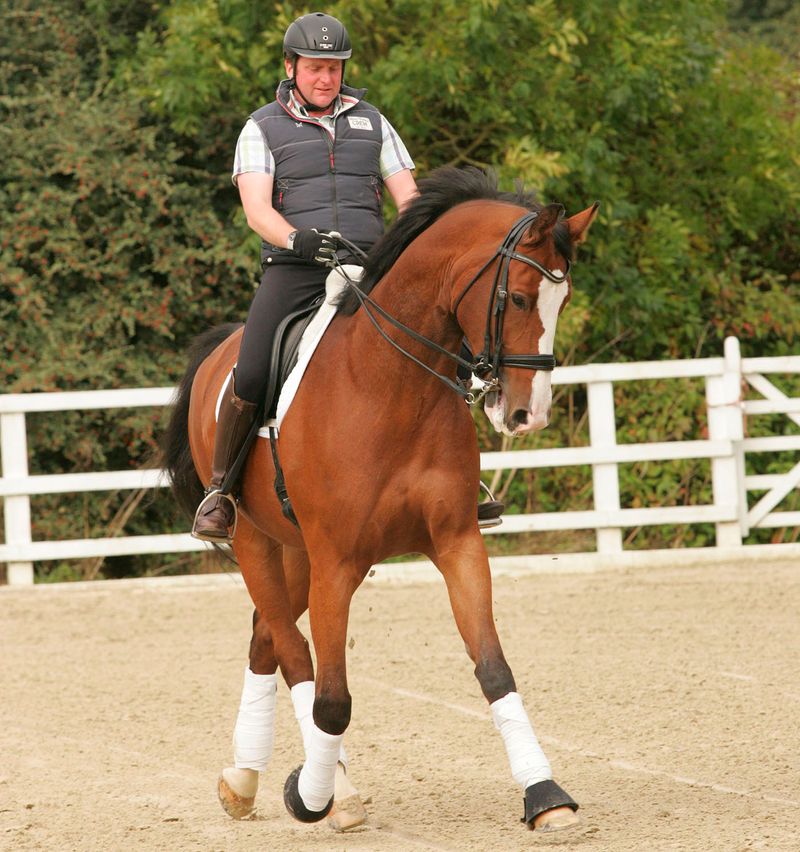
Sideways movement showcases a horse’s flexibility and training level. During lateral work, horses cross their legs while moving sideways rather than forward.
Dressage movements like half-pass and leg-yield fall into this category. A smooth lateral gait indicates exceptional body awareness and responsiveness to subtle leg cues. This sophisticated movement reveals advanced communication between horse and rider.
11. Extended Walk
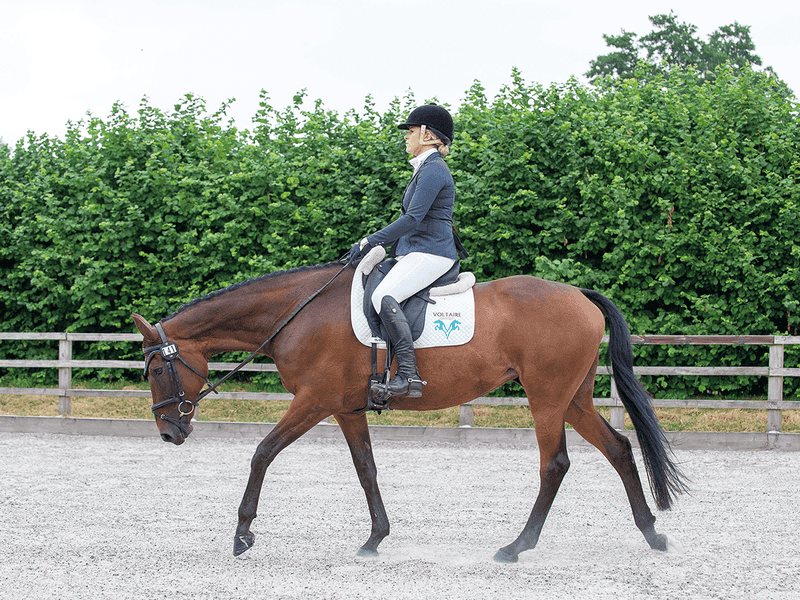
The extended walk stretches a horse’s frame while maintaining the four-beat rhythm. Each stride covers maximum ground without rushing or losing relaxation.
A quality extended walk shows suppleness through the back and freedom in the shoulders. Horses with good conformation naturally excel at this movement. The extended walk reveals how well a horse can maintain rhythm while stretching its topline.
12. Slow Trot
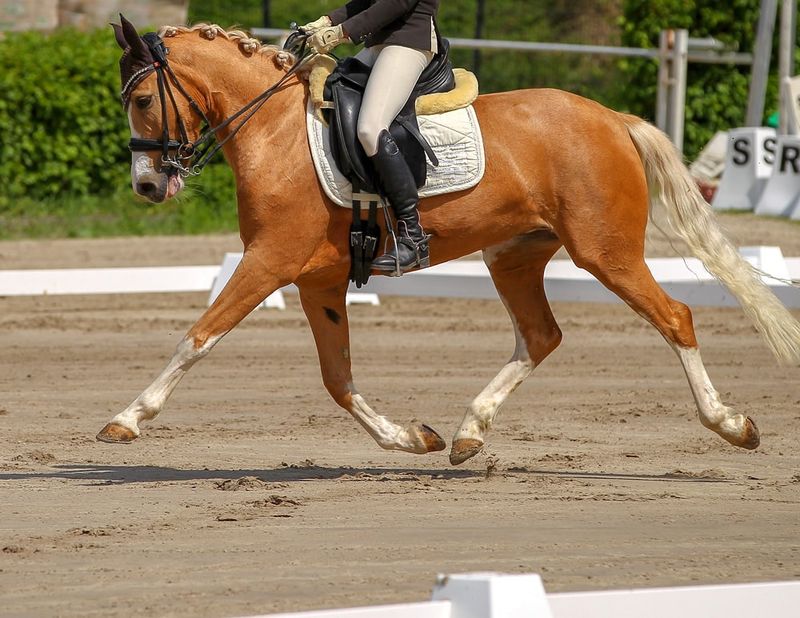
The collected slow trot demands self-carriage and muscular control. Horses maintain the two-beat rhythm while shortening their stride and elevating their frame.
Western pleasure horses and dressage mounts showcase this controlled movement. A balanced slow trot demonstrates excellent training and physical development. The ability to maintain cadence at reduced speed reveals a horse’s level of collection and engagement.

